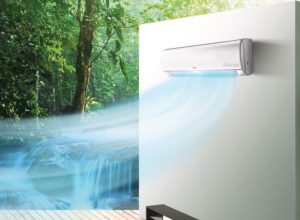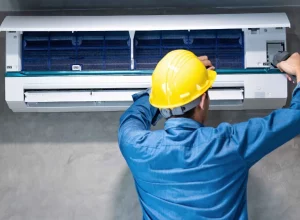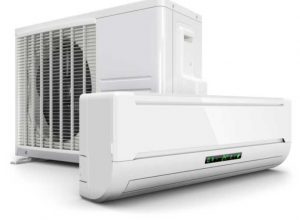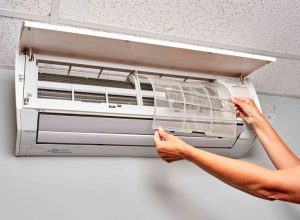Contents
Understanding Ductless Mini-Split AC Systems
A ductless mini-split air conditioning system is an energy-efficient alternative to traditional HVAC systems that utilize ducts for air distribution. These systems consist of two main components: an indoor unit and an outdoor unit. The indoor unit, often mounted on a wall or ceiling, provides the cooling or heating function, while the outdoor unit contains the compressor and condenser. Mini-splits utilize refrigerant lines that connect the indoor and outdoor components to transfer heat, making them versatile and efficient climate control solutions.
Pros of Installing a Ductless Mini-Split AC System
When considering whether a ductless mini-split system is right for your home or business, several advantages should be examined:
Energy Efficiency
Mini-split systems boast high Seasonal Energy Efficiency Ratios (SEER). The ability to control the temperature in individual rooms reduces energy waste, resulting in lower utility bills. For instance, if a household has multiple rooms, a mini-split system can allow for cooling only the living areas during the day, while bedrooms remain unconditioned, saving energy.
Easy Installation
Unlike traditional central air systems, which require extensive ductwork, ductless mini-split systems have a simpler installation process due to their compact size. A small hole for refrigerant lines is all that’s needed to connect indoor and outdoor units. This feature not only expedites the installation process but also can reduce structural modifications and overall installation cost.
Zoned Comfort Control
Ductless systems offer the ability to create different temperature zones within a home. Each indoor unit can be controlled independently, allowing users to customize the climate in various spaces. For instance, a family could set the living room to a cooler temperature while maintaining a warm environment in bedrooms, enhancing comfort and satisfaction.
Quiet Operation
Mini-split units typically operate more quietly than traditional air conditioners. Most indoor units have noise levels comparable to a whisper, making them ideal for bedrooms, home offices, or any environment where tranquility is essential.
Versatile Applications
Mini-splits can be used for both heating and cooling, making them a versatile choice for climates with fluctuating temperatures. They can also be installed in locations where conventional heating and cooling systems may not be feasible, such as in homes without ductwork, converted attics, garages, or detached spaces like workshops.
Use Cases for Ductless Mini-Split AC Systems
When evaluating whether to install a ductless mini-split AC system, consider the following scenarios:
Home Additions and Converted Spaces
When adding a room or converting an attic or basement into livable space, a ductless mini-split system offers an efficient cooling and heating solution without the need for ductwork. This is particularly useful in older homes where adding ducts can be challenging and costly.
Supplemental Cooling for Specific Areas
In larger homes, some rooms may not receive adequate cooling from central air systems. Installing mini-split units in these under-cooled rooms can effectively bridge the gap. This is often the case with sunrooms or rooms with large windows, which can absorb excessive heat.
Commercial Applications
Businesses in retail, offices, or restaurants can benefit from ductless mini-splits to maintain a comfortable environment for both customers and employees. These systems are especially useful in open-concept designs or spaces that require varied climate control, allowing for efficient zoning strategies.
Historic and Retrofits
In historic buildings where preserving the original architecture is critical, traditional duct systems can be intrusive. Ductless mini-split systems maintain aesthetics while providing modern comfort, making them an ideal choice for such properties.
Potential Drawbacks to Consider
While there are numerous advantages, it is prudent to consider some drawbacks that may influence your decision:
Initial Cost
The upfront cost of purchasing and installing ductless mini-split systems can be higher than central air conditioning systems. That being said, the energy savings over time can offset these initial expenses.
Aesthetic Concerns
Some individuals may find the appearance of indoor units less appealing than traditional central air vents. However, many manufacturers offer sleek designs that can integrate into various decor styles.
Regular Maintenance Requirements
While mini-splits typically require less maintenance than traditional systems, the indoor air filters do need to be cleaned or replaced regularly to maintain efficiency and indoor air quality.
Conclusion
Installing a ductless mini-split AC system presents a compelling option for many homeowners and businesses, particularly in cases where efficiency, flexibility, and ease of installation are prioritized. By understanding the benefits, potential use cases, and drawbacks, you can make an informed decision that aligns with your specific cooling and heating needs.






